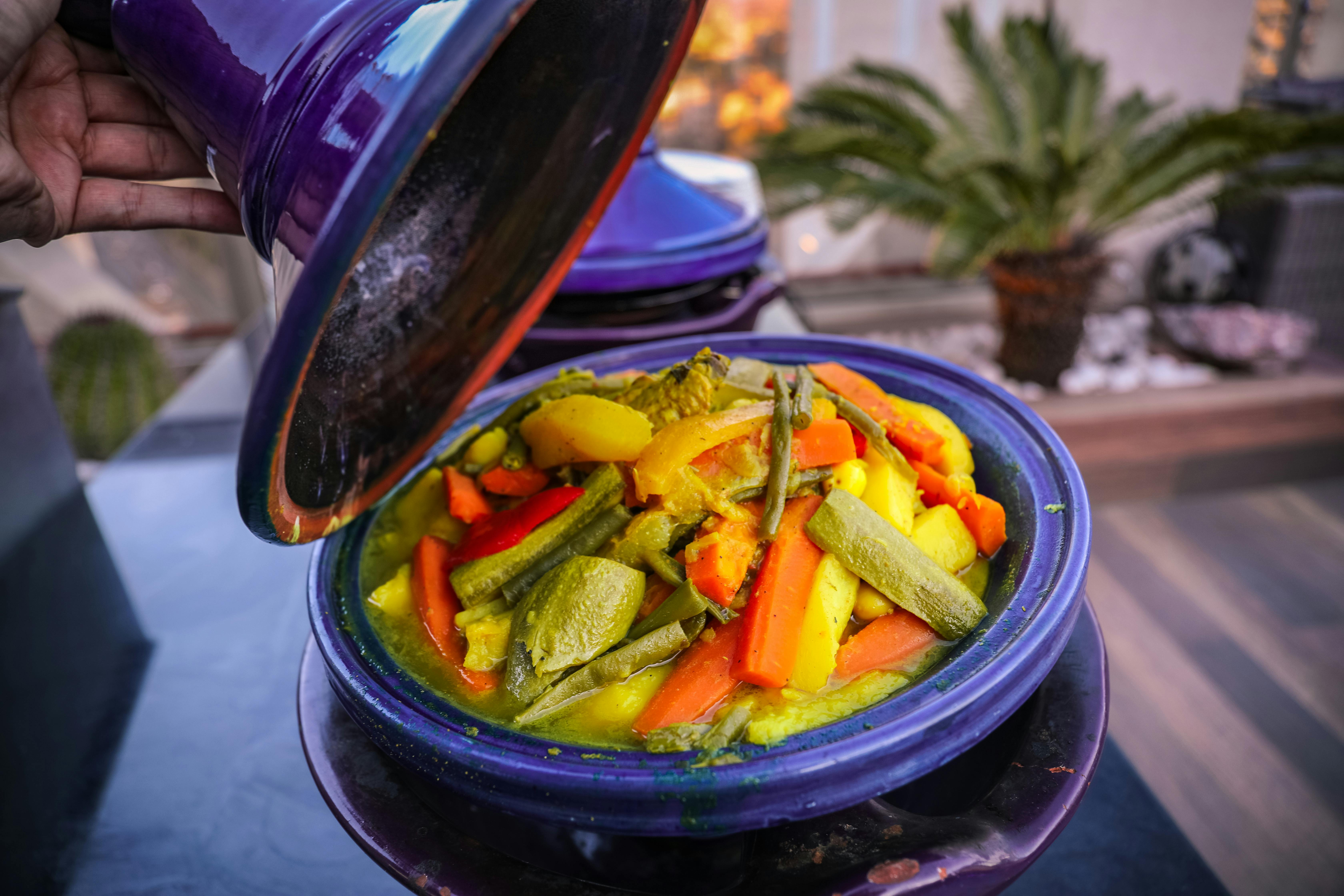Unveiling the Allure of Moroccan Cuisine
Morocco's culinary scene is a vibrant and exciting blend of flavors, spices, and cooking techniques. Its rich culinary heritage, influenced by Berber, Arab, French, and Spanish cultures, makes Moroccan cuisine an exciting gastronomic journey for food enthusiasts worldwide. This article will delve into the unique aspects of Moroccan cuisine, its popular dishes, innovative cooking techniques, and how it is evolving to meet contemporary dining trends.

A Taste of Moroccan Cuisine
Moroccan cuisine has a unique blend of sweet and savory flavors, using a variety of spices. Cumin, coriander, saffron, chilies, dried ginger, cinnamon, and paprika are some commonly used spices, contributing to the cuisine’s distinct taste. Popular dishes include couscous, tagine, and bastilla, each offering a unique gastronomic experience.
The Art of Moroccan Cooking
Moroccan cooking is an intricate art, often involving time-consuming and labor-intensive processes. The traditional method of slow-cooking in earthenware pots, known as tagines, is still widely practiced. This method allows the flavors to slowly infuse, resulting in mouthwateringly tender and flavor-packed dishes.
Signature Dishes and Beverages
Couscous, considered the national dish of Morocco, is a staple in Moroccan homes and is often accompanied by meat, vegetables, and a flavorful sauce. Tagine, a slow-cooked stew named after the earthenware pot it’s cooked in, is another traditional dish. Moroccan mint tea, also known as ‘Moroccan Whiskey,’ is a popular beverage, often served with meals and during social gatherings.
Innovations in Moroccan Cuisine
While traditional dishes continue to dominate Moroccan cuisine, contemporary chefs are introducing innovative spins on classic recipes. Fusion dishes that blend Moroccan flavors with international cuisines are gaining popularity. Vegan and gluten-free adaptations of traditional dishes cater to the growing demand for healthier dining options.
Moroccan Cuisine and Global Food Trends
As global food trends lean towards more health-conscious choices, Moroccan cuisine’s emphasis on fresh vegetables, lean proteins, and spices aligns well with these trends. Ingredients like couscous and chickpeas, staples in Moroccan cuisine, are gaining popularity worldwide due to their health benefits.
- Moroccan cuisine uses a variety of spices, each carrying health benefits.
- Traditional cooking techniques like slow-cooking in tagines preserve the nutritional value of ingredients.
- Couscous, a staple in Moroccan cuisine, is a healthy alternative to rice and pasta.
Embracing Moroccan Flavors
Immersing yourself in Moroccan cuisine is not just about sampling dishes at a restaurant. It involves understanding the cuisine’s history, the cooking techniques, and the use of spices. It’s about embracing the culture and the lifestyle that has shaped this vibrant cuisine.
As we conclude this culinary journey through Moroccan cuisine, remember that the best way to appreciate a cuisine is by experimenting with it yourself. So, why not try making a traditional Moroccan dish at home? Not only will you get to enjoy a delicious meal, but you’ll also gain a deeper understanding and appreciation for the rich and diverse Moroccan culinary heritage.



